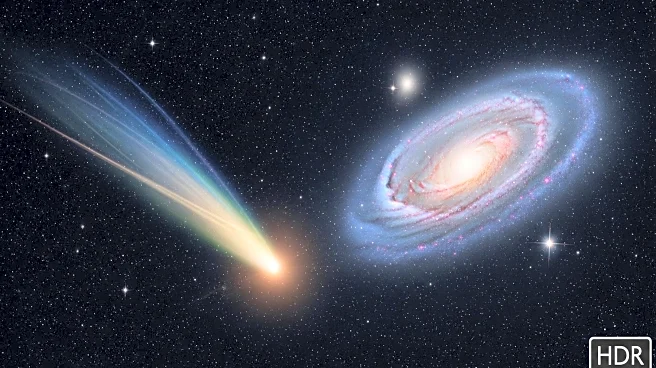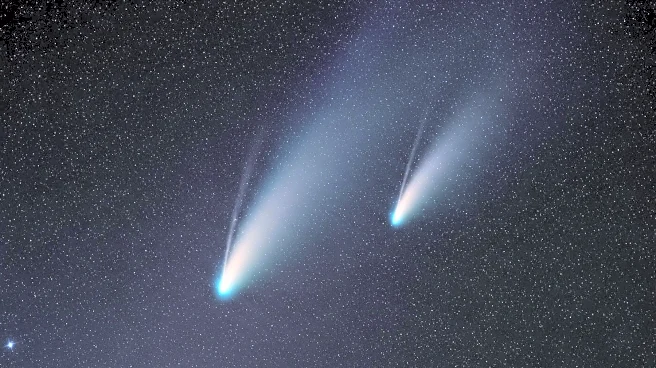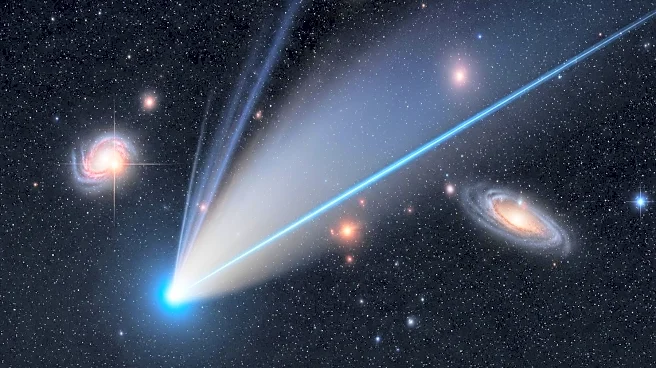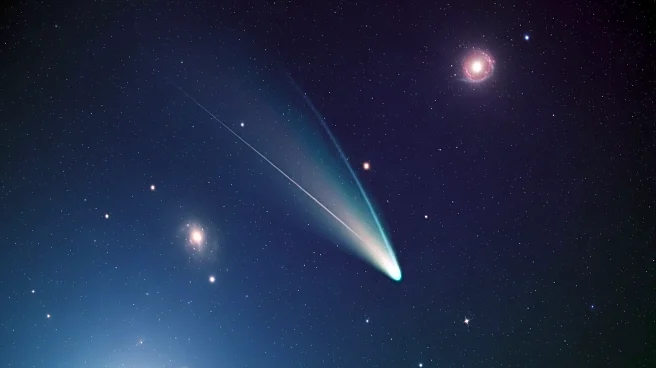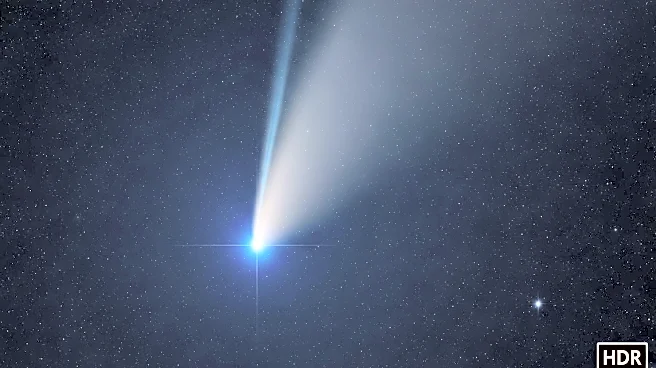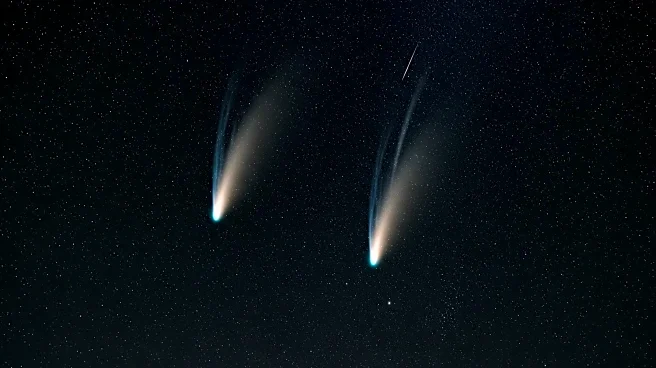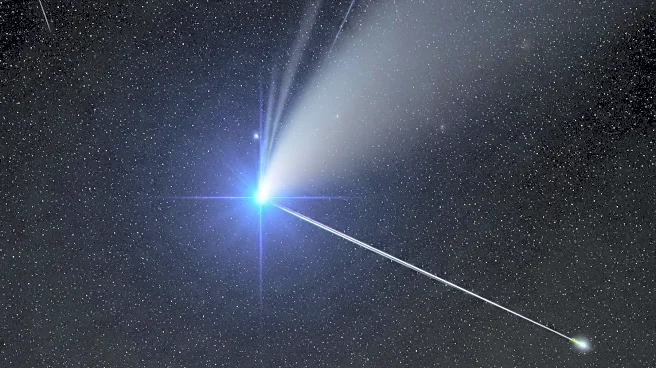What is the story about?
What's Happening?
Comet Lemmon (C/2025 A6) is currently near the edge of naked-eye visibility, displaying intricate and rapidly changing details in astronomical images. Recently, astroimagers captured the comet as it passed by the Little Pinwheel Galaxy (NGC 3184) on October 5, using 45 minutes of LRGB exposure at a focal length of 400mm. The images reveal the comet's dynamic features and its proximity to the galaxy, offering a unique view of celestial interactions.
Why It's Important?
The observation of Comet Lemmon provides valuable data for astronomers studying cometary behavior and interactions with other celestial bodies. Such detailed imaging helps improve understanding of comet composition, trajectory, and the effects of gravitational forces from nearby galaxies. This contributes to the broader field of astronomy by enhancing knowledge of cosmic phenomena and the dynamics of the solar system.
What's Next?
As Comet Lemmon continues its journey through space, astronomers will likely conduct further observations to track its path and analyze its characteristics. These studies may lead to new insights into cometary physics and the potential for future visibility to the naked eye. Continued monitoring will also help refine models of cometary motion and interactions with other celestial objects.
Beyond the Headlines
The study of comets like Lemmon offers a glimpse into the early solar system's conditions, as comets are considered remnants from its formation. Understanding their composition and behavior can provide clues about the materials and processes that shaped the solar system's evolution.
AI Generated Content
Do you find this article useful?
